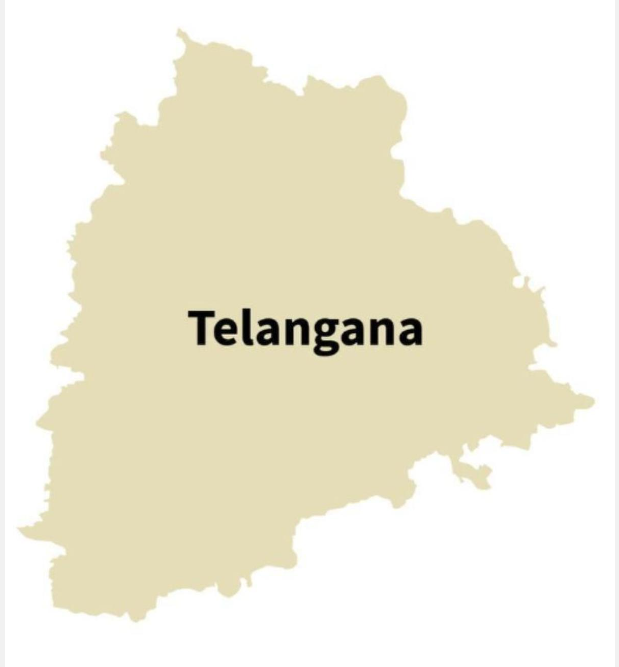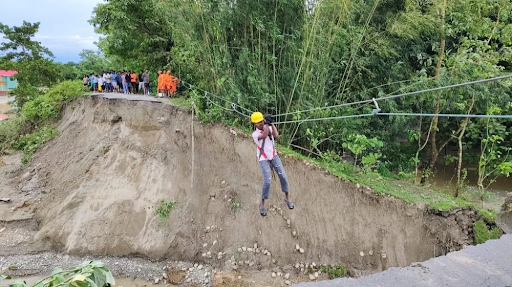Copyright infringement not intended
Picture Courtesy: The Hindu
Context:
Hyderabad faced widespread flooding during the 2025 monsoon, disrupting daily life: homes were submerged, roads damaged, power disrupted, and businesses shut down.
What are Urban Flooding and Urban Climate Emergency Fund?
Urban flooding is phenomena in which excessive rainfall, inadequate drainage, or overflowing water bodies lead to water accumulation in heavily populated city areas, causing damage to property and disruption of daily life. For e.g. Gurugram (Haryana), Hyderabad (Telengana)
An Urban Climate Emergency Fund is a dedicated financial mechanism designed to help cities respond to, recover from, and adapt to climate-related disasters like floods, heatwaves, cyclones, and water scarcity.
Key-objectives of Urban Climate Emergency Fund:
- Quick access to funds during climate-related disasters (e.g., floods, extreme heat).
- Rebuilding homes, roads, schools, and utilities damaged by climate events.
- Investing in long-term solutions like:
- Urban drainage systems.
- Green infrastructure (parks, wetlands).
- Restoration of lakes and floodplains.
- Preventive measures like flood forecasting systems, heat action plans, and early warning systems.
Major causes of Urban flooding in India:
Monsoon rainfall
India experiences heavy monsoon rains, particularly from the Southwest Monsoon, which can overwhelm city drainage systems. Some cities like Mumbai receive high rainfall in short bursts, leading to waterlogging.
- Example: The 2015 Chennai floods were triggered by exceptionally heavy rainfall, intensified by a cyclonic system over the Bay of Bengal.
Geographical vulnerability
Many Indian cities are built on low-lying coastal zones or floodplains. Their natural topography leads to water accumulation during heavy rains.
- Examples:
- Mumbai, located on the Konkan coast, is affected by high tides that slow drainage.
- Kolkata, situated in the Ganga-Brahmaputra delta, faces similar risks.
- Bengaluru, though elevated at about 900 meters, lacks large rivers to carry away excess water, making it susceptible to waterlogging.
Climate Change and Extreme weather
Climate change is contributing to more unpredictable and intense rainfall events, often resulting in flash floods in urban areas.
- Example: In 2023, Delhi faced severe flooding as unprecedented rainfall caused the Yamuna River to breach its banks and flood parts of the city.
Urban expansion
Rapid, unplanned urbanization has led to the loss of natural drainage paths, lakes, wetlands, and floodplains. Concrete surfaces prevent water absorption, increasing surface runoff.
- Example: Bengaluru once had over 1,000 lakes. Due to encroachment and development, about 80% have been lost or degraded, reducing the city’s ability to absorb rainwater.
Outdated drainage systems
Many Indian cities rely on obsolete and undersized drainage infrastructure that cannot handle current rainfall levels.
- Example: Mumbai’s drainage system, originally designed during British rule to manage 25 mm/hr, is frequently overwhelmed during today’s monsoons, as seen in the 2023 floods.
Mismanagement of solid waste
Poor handling of solid waste leads to clogged drains, canals, and stormwater channels, worsening flooding during heavy rain.
- Examples:
- In Himachal Pradesh (2023), plastic waste blocked both natural and man-made drainage routes.
- During the 2015 Chennai floods, silt and garbage clogged estuary canals, while unplanned construction obstructed natural waterways, intensifying flood impact.
Deforestation and Land misuse
Widespread tree cutting and improper land use practices, especially in hilly regions, lead to higher surface runoff and siltation, contributing to urban floods downstream.
- Example: Guwahati in Assam experiences regular flooding partly due to deforestation in the surrounding hills caused by shifting cultivation and grazing.
Major impacts of Urban Flooding:
- Floodwaters cause extensive destruction to essential urban infrastructure — including roads, bridges, power lines, water supply systems, and public transport networks.
- Flooding often results in stagnant water, which becomes breeding grounds for disease-carrying mosquitoes.
- Urban flooding affects marginalized communities the most, particularly those living in informal settlements and flood-prone zones.
- Floodwaters carry garbage, industrial effluents, and untreated sewage into rivers and lakes, degrading water quality and harming aquatic life.
- Recurring urban floods highlight the limitations of existing city infrastructure. Blocked or undersized drains, poor waste management, and unchecked construction on water bodies lead to repeated flooding events and emergency spending.
Measures to enhance Urban Flood resilience:
- Managing entire river basins holistically—considering both upstream and downstream regions—helps mitigate flood risks at the source. By preserving natural drainage patterns and catchment areas, cities can reduce the volume and speed of water entering urban zones. Forg.: The Netherlands’ "Room for the River" initiative sets aside areas for rivers to safely overflow without damaging urban infrastructure.
- Sustainable Urban Drainage Systems (SUDS) mimic natural water cycles by promoting local water absorption and slowing runoff.
- Implementing the 'Sponge City' model, which focuses on transforming urban areas into spaces that can absorb and reuse rainwater efficiently through natural and engineered systems.
- Restoring degraded lakes, wetlands, and natural floodplains significantly improves a city's ability to manage stormwater and prevent flash floods.
- Local communities play a crucial role in flood preparedness and response. Empowering them through awareness programs, training, and inclusion in disaster planning ensures a faster and more coordinated response during emergencies.
Source: The Hindu
|
Practice Question
Q. Explain the primary causes of urban flooding in Indian cities. Highlight both natural and human-induced factors with examples. (250 Words)
|
Frequently Asked Questions (FAQs)
Urban flooding is the accumulation of water in city areas due to intense rainfall, overflowing rivers, poor drainage, or blocked water channels.
- Heavy monsoon rains
- Encroachment on water bodies and floodplains
- Poor drainage infrastructure
- Rapid, unplanned urbanization
- Damage to infrastructure (roads, bridges, power supply)
- Economic loss
- Waterborne diseases and health crises













